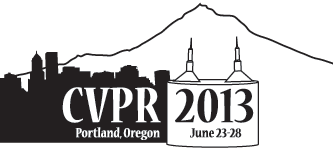-
Kernel Null Space Methods for Novelty Detection
AbstractDetecting samples from previously unknown classes is a crucial task in object recognition, especially when dealing with real-world applications where the closed-world assumption does not hold. We present how to apply a null space method for novelty detection, which maps all training samples of one class to a single point. Beside the possibility of modeling a single class, we are able to treat multiple known classes jointly and to detect novelties for a set of classes with a single model. In contrast to modeling the support of each known class individually, our approach makes use of a projection in a joint subspace where training samples of all known classes have zero intra-class variance. This subspace is called the null space of the training data. To decide about novelty of a test sample, our null space approach allows for solely relying on a distance measure instead of performing density estimation directly. Therefore, we derive a simple yet powerful method for multi-class novelty detection, an important problem not studied sufficiently so far. Our novelty detection approach is assessed in comprehensive multi-class experiments using the publicly available datasets Caltech-256 and ImageNet. The analysis reveals that our null space approach is perfectly suited for multi-class novelty detection since it outperforms all other methods.
Related Material
[pdf][bibtex]@InProceedings{Bodesheim_2013_CVPR,
author = {Bodesheim, Paul and Freytag, Alexander and Rodner, Erik and Kemmler, Michael and Denzler, Joachim},
title = {Kernel Null Space Methods for Novelty Detection},
booktitle = {Proceedings of the IEEE Conference on Computer Vision and Pattern Recognition (CVPR)},
month = {June},
year = {2013}
}
These CVPR 2013 papers are the Open Access versions, provided by the Computer Vision Foundation.
Except for the watermark, they are identical to the accepted versions; the final published version of the proceedings is available on IEEE Xplore.
Except for the watermark, they are identical to the accepted versions; the final published version of the proceedings is available on IEEE Xplore.
This material is presented to ensure timely dissemination of scholarly and technical work.
Copyright and all rights therein are retained by authors or by other copyright holders.
All persons copying this information are expected to adhere to the terms and constraints invoked by each author's copyright.

